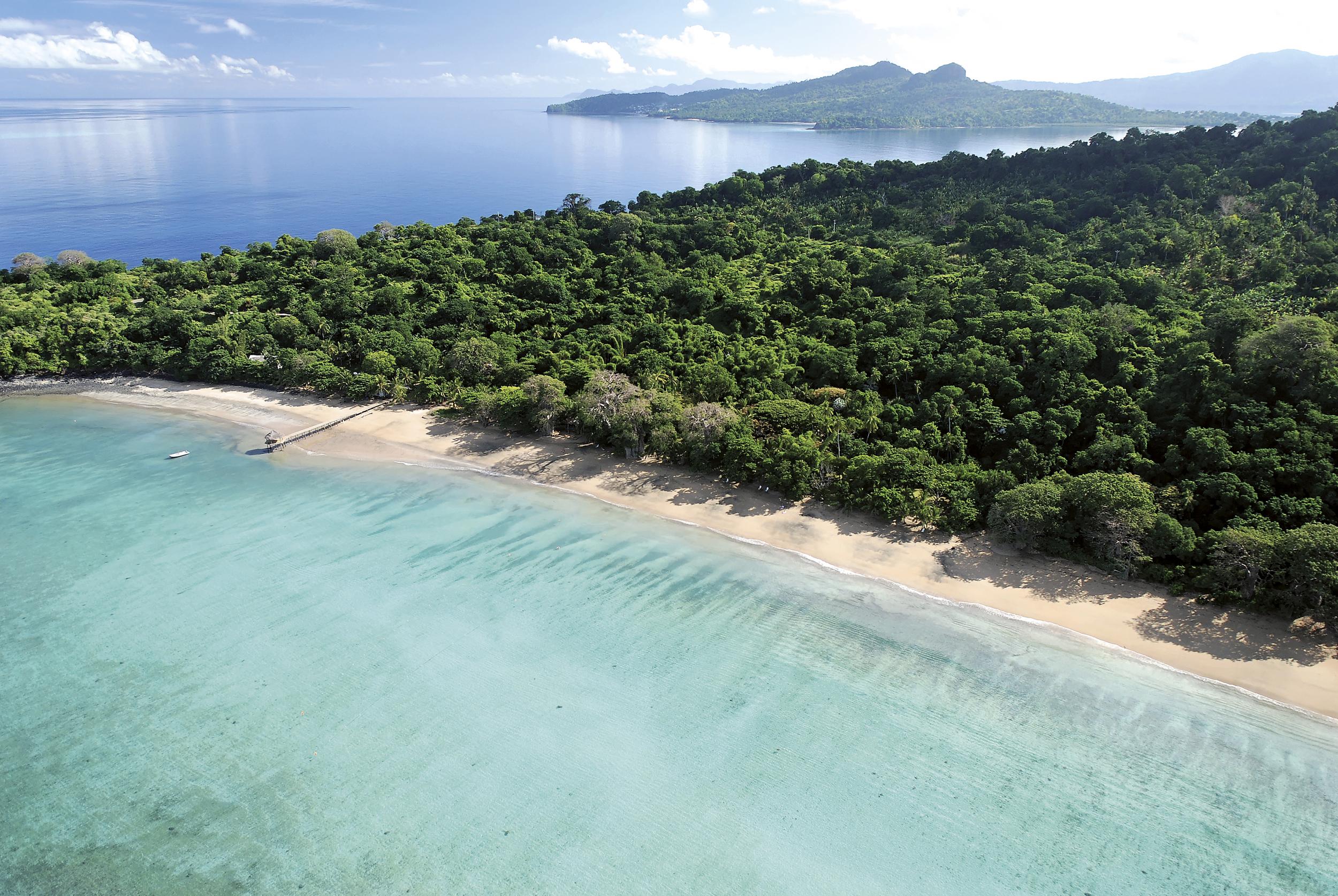Mayotte: Find hiking, beaches and lemurs on this French island
Hike volcanoes, relax on coconut palm-fringed beaches and breakfast with lemurs on this extraordinary island

Take a succulent lobster and add a vanilla sauce and you have a crime passionnel against French cuisine. Other more classical Gallic flavour combinations like duck a l’orange were on the menu at Auberge du Rond-Point, a white tablecloth bistro in Mamoudzou town. But as the signature dish of the 101st department of France, this curious lobster combination was as eye-catching as the sauce was cloyingly sweet.
In mitigation, the department is Mayotte in the Indian Ocean, which has vanilla to burn. Near Madagascar, the island has native flora scented by clove trees, ylang-ylang bushes and wild vanilla orchids, which bestowed the sobriquet “Perfume Islands” upon the four islands of the Comoros archipelago (of which Mayotte is one).
Such opulent aromas duly attracted 10th-century Arab spice traders who brought Islam and Arabian words still spoken in Mayotte’s Comoran creole. European traders followed and France colonised the islands in 1841. But in 1975, Mayotte remained alone in not wanting to break away from France as the other three islands formed the independent Union of Comoros. Perhaps reluctant to bid a fond adieu to duck a l’orange, Mayotte voted to become a fully fledged French department in 2009.
From the start, I found the tropical fusion of Indian Ocean colour and French touches enticing. Mayotte’s backbone is formed from extinct volcanoes, rounded, dare I say, like little chapeau de Napoleon. Bananas, pawpaw, and jackfruit flourish in flavour-filled forests while coral reefs encompass turquoise lagoons teeming with tropical fish and dolphins.
This pleasing ambience was evident a few days into my week-long visit when I came to hike Mont Combani, one of the island’s extinct volcanoes. I settled in at a hotel called Le Relais Forestier, where the proprietor, Nadine, from Angers in France, also taught yoga. The most pleasing time was breakfast, served on a wooden terrace with distant views through a thicket of palms towards the Indian Ocean. Not just for Nadine’s homemade bread and pawpaw jam but midway through this very French breakfast, a small group of lemurs arrived.
They come every morning to be fed pawpaw, said Nadine. Known locally as “maki”, they are a species of woolly brown lemur that were introduced from Madagascar but nobody remembers when. Having moved to the island herself, Nadine said life for her and her husband in mainland France had become stale. “We took a vacation here a decade ago and loved it. Mayotte has wonderful nature and we never wanted to return home.”
Mayotte’s best mountain hike is actually further south towards Bandrele. The island has no public transport, so I travelled around using bush taxis. These are shared taxis you simply hail from the side of the road and pay a few euros per journey.
At Bandrele, it was a similar theme of another pleasant B&B run by a French woman, Lise, from Bordeaux, who had fallen in love with the island and married a local called Yannis. The view from Les Baobabs is, appropriately, a large baobab lit up like a Christmas tree by a climbing purple and white bougainvillea. At dusk, huge flying foxes swept around the backyard crashing into the nearby palms before nonchalantly suspending themselves upside down.
This is the base for an excursion to climb Mont Choungui – Mayotte’s second highest volcano. It is ridiculously steep and for an hour I pulled myself up by exposed tree roots through sweltering rainforest. But the view from the 600m summit, with views spanning southern Mayotte’s indented coastal inlets, filled by veneers of calamine-coloured sandy beaches, made the effort worthwhile.
The best beach is Place N’Goudja, 10 minutes from Choungui by taxi. The beach is backed by coconut palms and colossal baobabs with elephant-textured bark. It’s also known for nesting green turtles although I couldn’t stay the night to watch them. Instead I contented myself swimming, examining the tractor-width trails they plough through the soft sand when coming in to lay eggs, before retiring for a few hours to escape the heat to the beach’s overpriced restaurant, which admittedly served a delicious plate of smoked marlin.
I did encounter green turtles a few days later. I’d made my way back northeast to Mayotte’s little sister island, Petite Terre, where an airport is located on rare flat ground. I settled into yet another chambre d’hote, Les Couleurs, this one run by Parisians Alexandra and Laurent.
“When we arrived 10 years ago the islanders were listening to Celine Dion but now it’s French rap,” said Alexandra, as we sat drinking a welcome glass of homemade pineapple rum.
The hike to a luminous green volcanic lake called Dziani from the property in Labattoir was a wonderful experience. It led to huge cliffs scalloped by horseshoe bays cradling turtle nesting beaches. From those cliffs I saw the circular forms of large green turtles navigating towards the beaches to lay eggs at night. Mayotte’s nature had been so sublime I even forgave the locals for murdering the shellfish of these seas with their rather sweet vanilla sauce.
Travel essentials
Getting there
Native Eye runs a group tour to the Comoros from £1,399 per person with a three-day add-on to Mayotte from £575.
Air France flies to Mayotte via Paris from £1,062 return. The destination can easily be combined with Madagascar, a short flight away.
Where to stay
Subscribe to Independent Premium to bookmark this article
Want to bookmark your favourite articles and stories to read or reference later? Start your Independent Premium subscription today.

Join our commenting forum
Join thought-provoking conversations, follow other Independent readers and see their replies